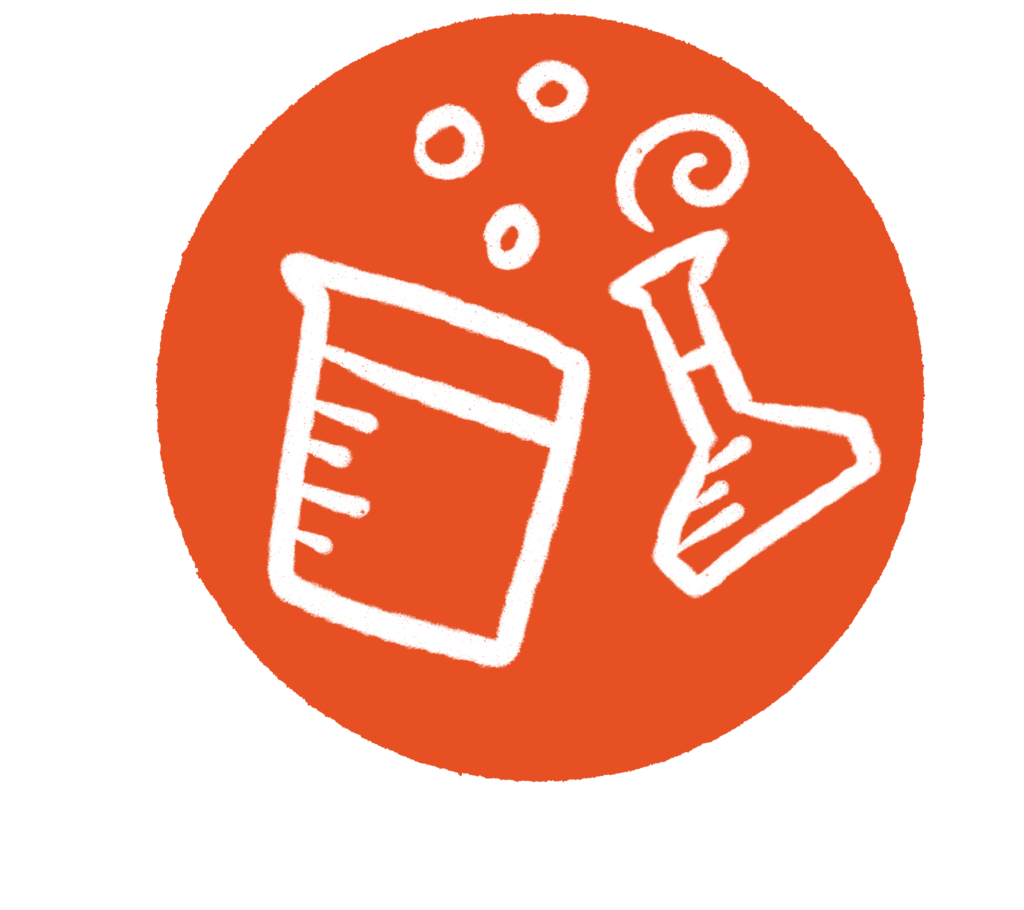
Illustration by Sylvia Asuncion-Crabb
The most successful Table Stakes organizations have a product-thinking mindset, whether they use those words or not. They root their journalism in their audiences’ and communities’ needs, using data to guide their strategies. They use a variety of platforms and create journalism specific to those platforms. And they have a culture of experimentation and learning with a willingness to fail along the way to success.

User needs and data-driven
 What it means
What it means
Gone are the days when what’s newsworthy is decided solely by the intuition of people within newsrooms. More and more local news organizations now listen to what their audiences want and need from them. This can be done through engaged journalism efforts (more on that later); research methods such as surveys, focus groups and one-on-one interviews; and studying the audience data available for various digital platforms.
More product-focused news organizations seek not only what content audiences need and want but also how they prefer to consume it. This information can help them develop new products that address needs and that their intended audiences will actually use.
Being data-driven doesn’t mean removing editorial judgment. API’s Metrics for News tool, which several Table Stakes organizations have used over the years, allows journalists to compare metrics against newsroom priorities. Being data-driven is about finding ways to listen to your audiences and act on what you hear to ensure you’re producing valuable journalism for your audiences and communities.
 What it looks like in practice
What it looks like in practice
- The Sumter Item in South Carolina, an alumnus of the University of North Carolina (UNC) Table Stakes Program, focused its work in the API-News Product Alliance (NPA) Product Development Sprint for Table Stakes alumni on reaching Generation Z through a video product. They knew from community and stakeholder feedback sessions that there was a void in their coverage — and that they weren’t addressing a community need to highlight youth whose successes happened outside of sports. Sumter’s Next Generation highlighted local teens through videos created for social media, as well as stories on the Item’s site and in print. They even secured a sponsor who signed on for a year for $18,000.
- The Chattanooga Times Free Press, an alumnus of the Poynter Table Stakes program and API-NPA Product Development Sprint participant, surveyed 120 readers and interviewed 10 of them to understand what they wanted from food coverage and news on the growing restaurant scene in the Tennessee city. They also hosted a roundtable with local chefs to understand the industry and its challenges better. That research and listening led to What to Eat Next, a paid newsletter. Though the newsletter fell short of converting the number of newsletter-only subscribers the Times Free Press anticipated, it surpassed their expectations for converting subscribers for print and digital subscriptions. The revamped food scene coverage that fueled the newsletter filled an audience need.
- The Times Union, an alum of the Major Market Table Stakes program and also an API-NPA Product Development Sprint participant, knew from its reader data on Metrics for News and surveys that its audiences in the Albany, New York, region valued weather coverage, including data-driven weather reporting. Spurred by this audience research, they borrowed and adapted weather forecast strategy from fellow Hearst organization the San Francisco Chronicle and partnered with New York State Mesonet at the State University of New York at Albany to access statewide weather data. In the first 12 months of increasing weather coverage and creating real-time trackers, the Times Union published 138 weather stories and trackers, up 10% from the previous 12 months. Visits to weather stories have more than doubled and average read time has increased by 20 seconds.
 Try this
Try this
- Read this guide on product research methods from the News Product Alliance to understand their best applications.
- Use this product research guide from the News Product Alliance to develop a plan.
- Use this value proposition canvas from Strategyzer to help determine how existing or new products would bring value to audiences based on your research about their needs.
Variety of platforms
 What it means
What it means
A big part of digital transformation is embracing new platforms, some owned and operated by your news organizations, such as your website and app, and others owned by other companies, such as social media and news aggregation apps. For most news organizations, these digital platforms are in addition to their “legacy” platform, whether it be print, TV or radio.
Using these digital platforms is not about chasing the latest tech trends, but rather going to where your current and potential audiences are. A survey conducted in 2024 by Pew Research found that 58% of adults prefer to get their news via digital devices; that number was 37% in a 2018 survey. In that same 2024 survey, 54% of U.S. adults said they sometimes get news from social media, a slight increase from previous years, though only 18% of adults prefer to get their news that way, compared to 23% who prefer news sites and apps.
In addition to gaining audiences by adapting to consumption habits, using multiple digital platforms can increase your brand awareness, open revenue streams and give you additional user data.
 What it looks like in practice
What it looks like in practice
- The Keene Sentinel, an alumnus of the Poynter Table Stakes program, was already publishing on platforms beyond its print roots when it joined the API-NPA Product Development Sprint in 2023. In fact, they had launched an audio podcast on hidden illnesses the year before. They wanted to expand the platforms and ways people could enjoy their coverage. For the second season of “Invisible Illness,” they added videos of the interviews, alongside the audio and full transcripts. Multiple platforms expanded their overall audience and gave them better engagement analytics.
- The Arizona Daily Star, an alumnus of the Major Market Table Stakes program, saw the API-NPA Product Development Sprint as an opportunity to listen to and better serve their sports audiences. Wildcaster LIVE, a sibling to its existing Wildcaster app and The Wildcast podcast, was designed to be a reader-centric experience that allows readers to interact with the reporters through pre-submitted questions and get a peek behind the scenes. The pre-recorded episodes are uploaded to YouTube, Facebook, X and the Star’s site. Providing coverage across all of these platforms and through multiple products brings coverage to University of Arizona fans on platforms they’re already on and allows diehard fans to dig deeper across platforms.
- There can also be cases where optimizing a platform is important for the organization’s survival, but might not be the default choice for its audiences. The Arkansas Democrat-Gazette, a UNC Table Stakes program alum, conducted several experiments to see how they could help move print readers to its digital replica; they found that offering them an iPad for keeping their same subscription rate was the most successful. The Atlanta Journal-Constitution, a Major Market Table Stakes alumnus, drew inspiration from that experiment when they eliminated home delivery in outlying areas. But a few years later, they found that many of their print readers already owned iPads and just needed one-on-one training to transition away from seven-day print.
- And finally, there might be a need to spin up a new platform in response to immediate audience needs, as was the case for text-only sites created by UNC Table Stakes alums Enlace Latino NC and Blue Ridge Public Radio and Poynter Table Stakes alum WUSF in response to Hurricanes Helene and Milton in 2024. These special site versions, which removed images, videos, ads and other features that require more bandwidth to load, allowed these organizations to get life-saving information out to audiences with spotty cell signals and Internet access.
 Try this
Try this
- Take stock of your existing newsletter inventory with this worksheet, developed by API’s Product Strategy team.
- Map a new newsletter product with this worksheet, developed by API’s Product Strategy team.
- Take inventory of your organization’s products and presence across platforms with this spreadsheet, developed by API’s Product Strategy team.
- Draw inspiration from these multi-platform election products, as featured on Better News, API’s case study site.
Experimentation
 What it means
What it means
The successful digital transformation of a news organization is the sum of many smaller experiments.
Experiments have many benefits. They allow you to test your assumptions, isolate tactics and strategies to see what works, get more people involved in creating and testing ideas, iterate based on what you learn, build resilience as you overcome failures and mitigate risk. Breaking down a larger challenge into smaller steps makes significant change manageable.
A culture of experimentation can also help more people feel invested in organizational success and foster innovation, as you have more people contributing their ideas.
As you embark on experiments, set clear, measurable goals, so you can be sure whether your tests are successful.
 What it looks like in practice
What it looks like in practice
- The Atlanta Journal-Constitution, an alumnus of the UNC and Major Market Table Stakes programs, noticed it was attracting a new audience with its coverage of the 2023 Fulton County indictment of then-former President Donald Trump. The news organization was committed to covering the entire arc of the story and serving this new audience. Their answer was to experiment with a pop-up newsletter. Establishing shared goals, defining workflow, casting blockers aside and iterating were all key to the experiment’s success. The newsletter launched with more than 1,000 subscribers just one week after sign-ups opened.
- The Kansas City Star, an alum of the Gannett-McClatchy Table Stakes program, designed coverage experiments that were fun for both its journalists and readers. Experiments included a “Let’s Dish” series highlighting a journalist’s favorite dish at a local restaurant; service journalism stories published in the months leading up to the Taylor Swift Eras and Renaissance tours to help concert-goers navigate the city and the experiences; and concert coverage that highlighted the unique experience rather than reviewing it. The Star added this coverage without adding staff, instead inviting everyone in the newsroom to participate in the experiments. That was a much-needed break for some reporters who typically cover traumatic topics. Stories from these experiments saw more local readership and often higher numbers of direct conversions than average. Coverage related to the Eras and Renaissance tours also led to record-setting engagement with the Star’s social media accounts with a younger audience.
- The Anchorage Daily News, a Poynter Table Stakes alumnus, took the opportunity of an annual event to experiment with new approaches to coverage under the mantra “no boring shit.” The newspaper reviewed analytics for coverage of the previous year’s Iditarod Trail Sled Dog Race. It then developed a plan to focus on online coverage, devote fewer journalists and experiment with social-first content. The result: Pageviews, engaged users and digital subscription starts all increased compared to the previous period.
 Try this
Try this
- Plan an experiment with this worksheet on design-do, a format familiar to Table Stakes program participants.
- Use this SMARTIE goals worksheet, from The Management Center, to set goals for your experiments and organization that are strategic, measurable, ambitious, realistic, time-bound, inclusive and equitable.
- Use these four questions to prompt creativity, from API’s vice president of Journalism Strategy, Samantha Ragland.
- Reflect on the value of failed experiments as you think about the resilience and lessons that come from things not going to plan.













